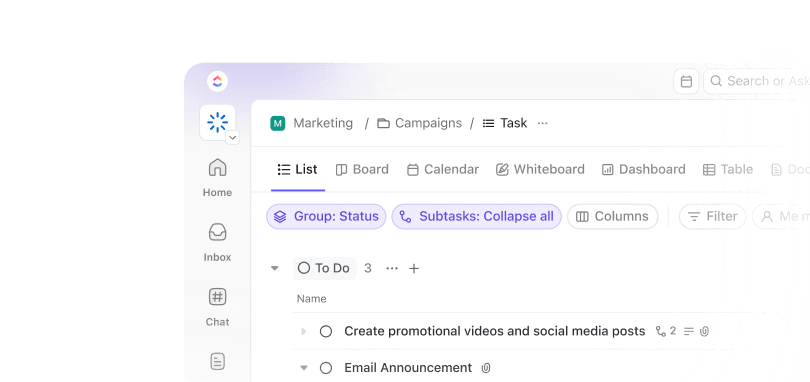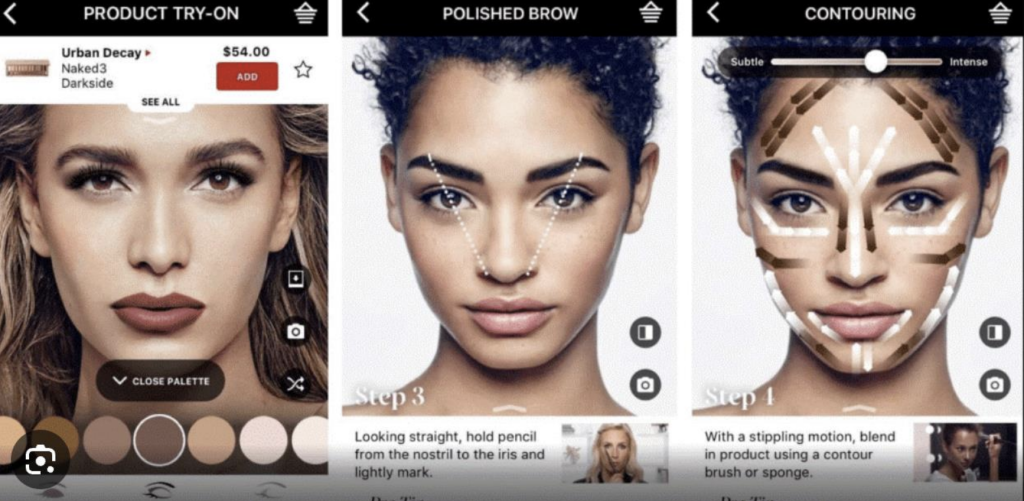You stare at campaign metrics that don’t make sense. Engagement spiked last week. But why?
While your team debates headlines and hashtags, you look at your AI dashboard to surface the answer: a small audience segment you’d nearly ignored is driving the surge. This insight reshapes your messaging and your confidence in the data behind it.
Using AI in marketing is about uncovering patterns that sharpen your instincts and make marketing decisions just a little smarter. Most teams struggle not because they lack data, but because that data lives in too many places. Work Sprawl slows insights, delays decisions, and makes marketing results harder to trust.
In this guide, we’ll explore how AI creates ‘Aha’ moments for marketing managers and how ClickUp helps bridge the gap between intuition and information. 👀
- What Are ‘Aha’ Moments in Marketing?
- Why Marketing Managers Need AI for Deeper Insights
- Top Ways AI Uncovers Breakthrough Marketing Insights
- AI in Marketing Workflows: From Insight to Execution
- How ClickUp AI Tools Help Marketing Managers Find ‘Aha’ Moments
- Real-World Examples of AI-Driven Marketing Insights
- Challenges and Ethical Considerations
- Metrics to Measure ‘Aha’ Impact
- Spark Smarter ‘Aha’ Moments With ClickUp
- Frequently Asked Questions (FAQ)
What Are ‘Aha’ Moments in Marketing?
An ‘Aha’ moment in marketing refers to the moment when scattered data, campaign results, and customer behaviors suddenly make sense.
It’s when a pattern emerges, maybe a new audience segment clicks with your product, a subtle message drives higher engagement, or a timing change doubles conversions. These moments turn information into insight.
Why Marketing Managers Need AI for Deeper Insights
Marketing data has exploded across SEO, social, ads, and email. It’s growing faster than most teams can interpret manually. AI helps you see the story behind these numbers and make smarter decisions faster.
Here’s how AI elevates every channel:
- SEO: Spots hidden keyword gaps, decodes search intent, and predicts which content will rise fastest
- Ads: Knows which audience, time, and platform delivers the best ROI and adjusts bids automatically
- Email: Sends messages when each contact is most likely to open, click, and convert
- Social media: Finds trending topics, tracks brand sentiment, and identifies what posts your audience cares about
📮ClickUp Insight: 37% of our respondents use AI for content creation, including writing, editing, and emails. However, this process usually involves switching between different tools, such as a content generation tool and your workspace.
With ClickUp, you get AI-powered writing assistance across the workspace, including emails, comments, chats, Docs, and more—all while maintaining context from your entire workspace.
Top Ways AI Uncovers Breakthrough Marketing Insights
A new brand campaign is performing unevenly across regions. Your AI platform instantly spots that engagement is highest where ad copy aligns with local search intent. With this insight, you know exactly where to shift your budget and how to adapt messaging.
This is just an example of how AI helps uncover breakthrough marketing insights. Let’s look at some other examples of AI in marketing:
Audience segmentation and behavior prediction
AI digs into behavior, timing, and preferences to create micro-segments that evolve in real time.
For instance, an AI marketing tool might notice that weekday shoppers click on ‘how-to’ ads while weekend browsers engage more with lifestyle stories. It adjusts campaigns automatically, keeping your messaging relevant without manual tweaks.
Additionally, predictive analytics adds another layer by spotting churn risks or customers likely to upgrade. This way, you can act before they drift away.
💡 Pro Tip: Micro-segments formed by behavioral event sequences (not demographics) are the ones that respond differently to offers. Temporal uplift models show time-aware segments outperforming static cohorts.
Campaign performance optimization
AI learns from your campaign metrics. When your click-through rate drops, it tests a new creative or shifts your ad spend where performance is stronger.
For example, a retail brand uses AI to reallocate ad budgets mid-campaign and sees a 22% lift in conversionss, all without human intervention.
📖 Also Read: Free Marketing Plan Templates in Excel and ClickUp
Sentiment analysis
AI-powered sentiment tools read the emotions behind customer feedback, whether that’s a tweet, a review, or a chat with support. Using AI for data analysis can flag rising frustration around delivery delays or spot a growing love for a new product feature.
A beauty brand catches early negative sentiment about packaging through AI alerts and revamps it before it turns into a PR issue, which is a good example of the use case. That’s proactive brand care in action.
🧠 Fun Fact: The term ‘sentiment analysis’ likely first showed up in use around 2003 (Nasukawa & Yi), while opinion mining was popularized soon after (Dave et al.).
Content performance mapping
AI shows you why a post performs well. It analyzes how different audiences respond to tone, visuals, and timing across platforms.
For example, a B2B brand might discover that short, data-driven videos outperform blog posts among tech professionals. With those insights, marketers can double down on what resonates and personalize content across the funnel.
Attribution insights
Knowing which marketing touchpoint drives a sale has always been tricky. AI solves that by tracing every user journey, from ad clicks to social mentions to final checkout.
For instance, a software company learned that its ‘free trial’ emails, not its display ads, were doing most of the heavy lifting for conversions. With that insight, they adjusted spend and saw ROI soar.
🔍 Did You Know? Superpath’s Content Attribution Report flags that teams using mixed methods (assists + experiments + model attribution) are far more likely to report content influence on revenue.
Anomaly detection
AI keeps an eye on your campaigns 24/7, flagging unusual activity instantly. That could mean a sudden dip in engagement, a traffic spike from a viral post, or suspicious clicks hinting at ad fraud.
Suppose a fitness app sees a sudden spike in unsubscribes overnight. AI detects a broken link in their email footer before the issue spreads further. Real-time awareness like this saves both money and reputation.
💡 Pro Tip: Maintain an anomaly playbook. Once an alert fires, your response steps should be templated (check campaign logs, check releases, validate sample or churned users) so you can triage fast. NAB’s design rationale emphasizes the value of early, actionable alerts.
AI in Marketing Workflows: From Insight to Execution
Here’s how AI connects the dots in your marketing workflow:
Collects and connects the data
AI pulls data from everything, including your CRM, ad dashboards, social media, website analytics, and customer interactions.
ClickUp Forms make this part effortless, letting you capture information directly from clients, leads, or campaign submissions.
Every submission automatically turns into a ClickUp Task, complete with custom fields, assignees, and due dates. You can even use conditional logic to tailor questions based on responses, ensuring teams only see what’s relevant.
Turns raw data into insights
It dives deep into the data to uncover patterns humans might miss, like which audience responds best to a certain message.
ClickUp Brain is a contextual AI-powered assistant that understands every corner of your workspace, including tasks, docs, chats, forms, and dashboards. You can simply ask: ‘Which campaigns had the highest ROI last quarter?’ or ‘What’s the most common user feedback from our latest form submissions?’
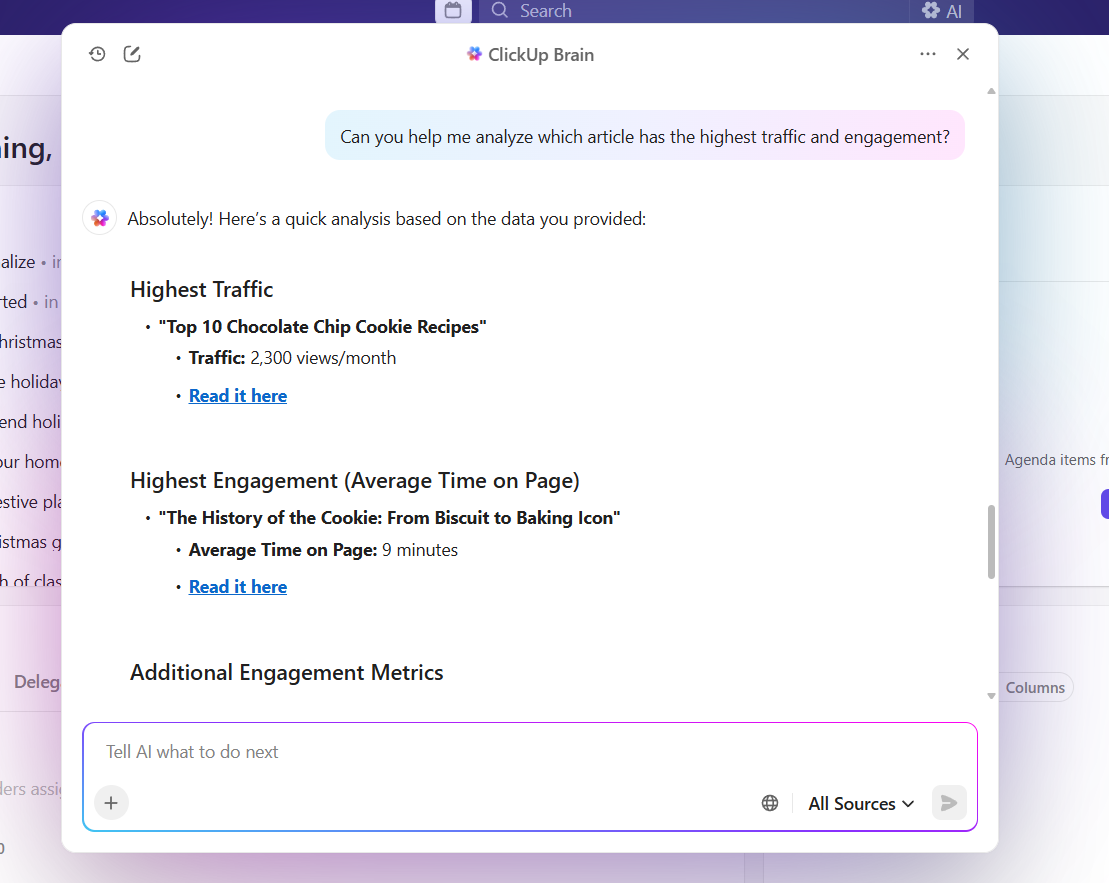
Let’s say your team just wrapped up a multi-channel campaign. ClickUp Brain identifies that social ads targeting ‘remote team leads’ had the strongest conversion rate, while email engagement lagged. That insight comes straight from the data already in your workspace.
Recommends the next move
Once the insight is clear, AI tools suggest what you need to do. It suggests specific steps you need to take, such as reallocating ad spend or adjusting a creative.
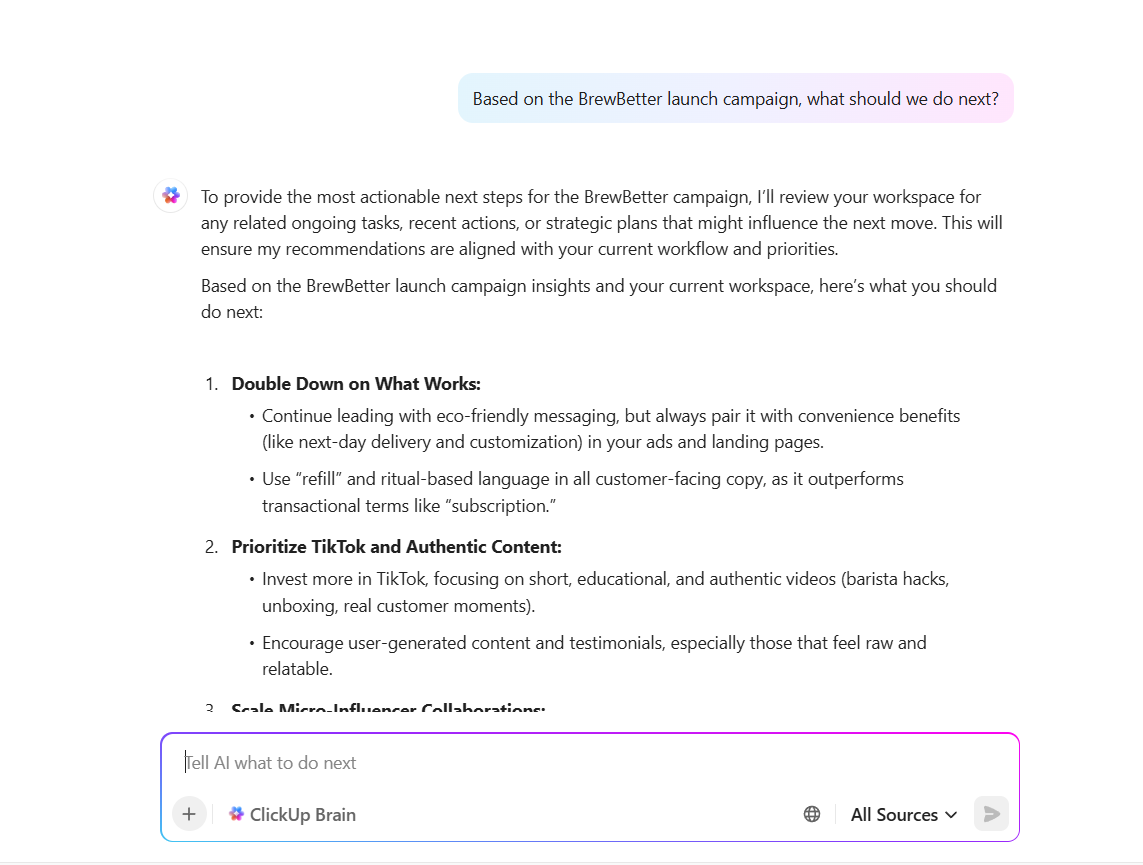
ClickUp Brain gives you the answer to your ‘What’s next?’ based on your workspace’s analytics. You get actionable insights after it analyzes your tasks, campaign progress, and performance data to highlight what needs attention and why. It even spots inefficiencies and flags bottlenecks to ensure a smooth AI marketing campaign execution.
As a creative boost, ClickUp Brain’s AI Writer for Work drafts the assets you need based on those insights.
📌 Example: If ClickUp Brain notices a drop in engagement for a running ad campaign, it might recommend testing a new headline. Within seconds, the AI Writer for Work generates three fresh headline options directly inside your workspace, ready for review.
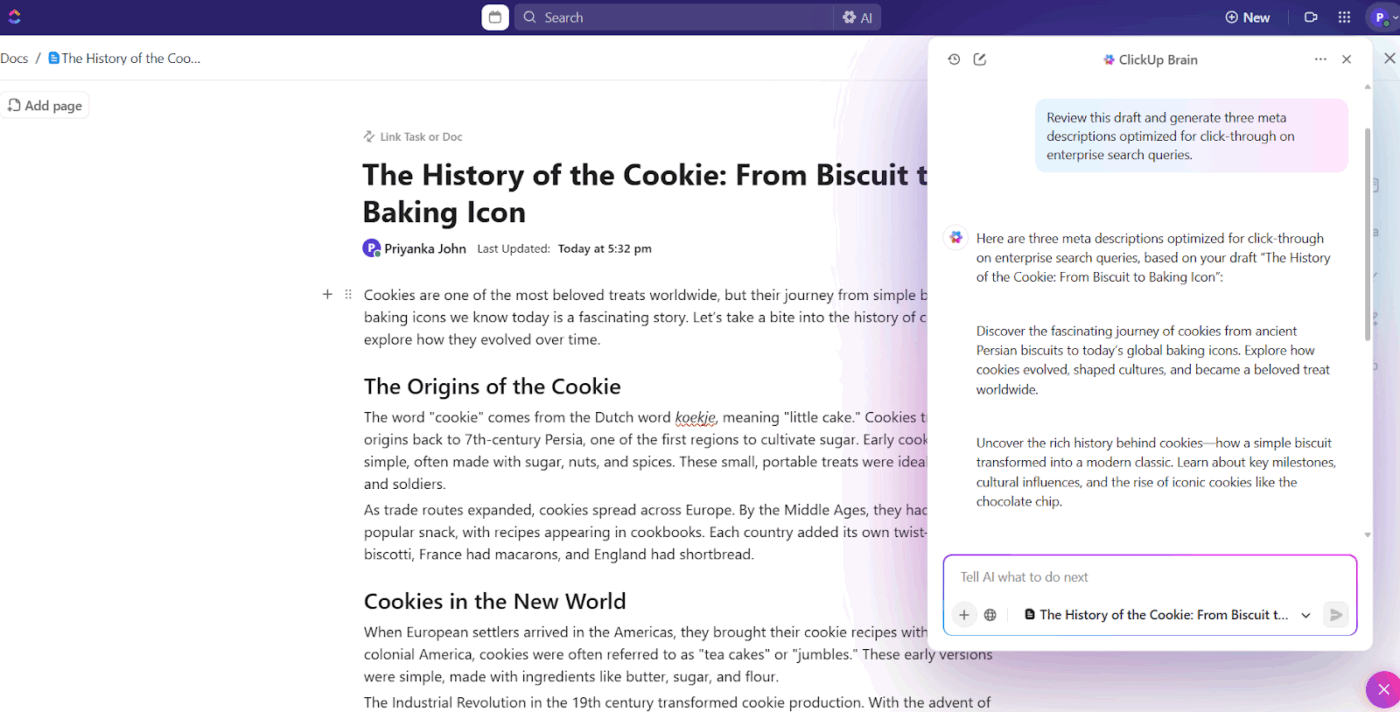
Here are some example prompts:
- Write three ad variations targeting the high-performing ‘Tech Enthusiast’ audience
- Generate a follow-up email for leads who engaged with our webinar but didn’t convert
- Draft a creative brief based on the campaign insights in this task
Automates and executes
AI syncs with marketing platforms, like email tools, ad managers, or CRMs, to roll out the recommended actions.
ClickUp Automations lets you set up simple ‘if this, then that’ rules or build multi-step automation chains to handle complex workflows. Suppose when a new campaign request comes in, Automations instantly create a Task, assign it to the right designer, and notify the marketing manager.

Here are some rules you can set in your campaign management tool:
- If a campaign task status changes to ‘Ready for Review,’ then notify the creative director
- If an ad campaign’s due date is missed, then automatically change the task priority to Urgent
- If an analytics report is uploaded to Docs, then attach it to the ongoing campaign task
🧠 Fun Fact: The short Bulova ad on July 1, 1941 (aired at 2:29 PM on WNBT, before a Dodgers vs Phillies game) is widely documented as the first paid TV commercial in U.S. history; it cost Bulova $9 and showed a clock-map combo with the slogan ‘America runs on Bulova time.’
Monitors and optimizes in real time
After launch, AI keeps watching. It tracks click-through rates, conversions, and sentiment, and makes tweaks instantly.
Create custom ClickUp Ambient Agents to monitor, analyze, and report on work in the background. Pick from:
- Prebuilt agents for everyday marketing workflows, like sending client updates and routing items for review
- Custom agents to automate complex, team-specific processes
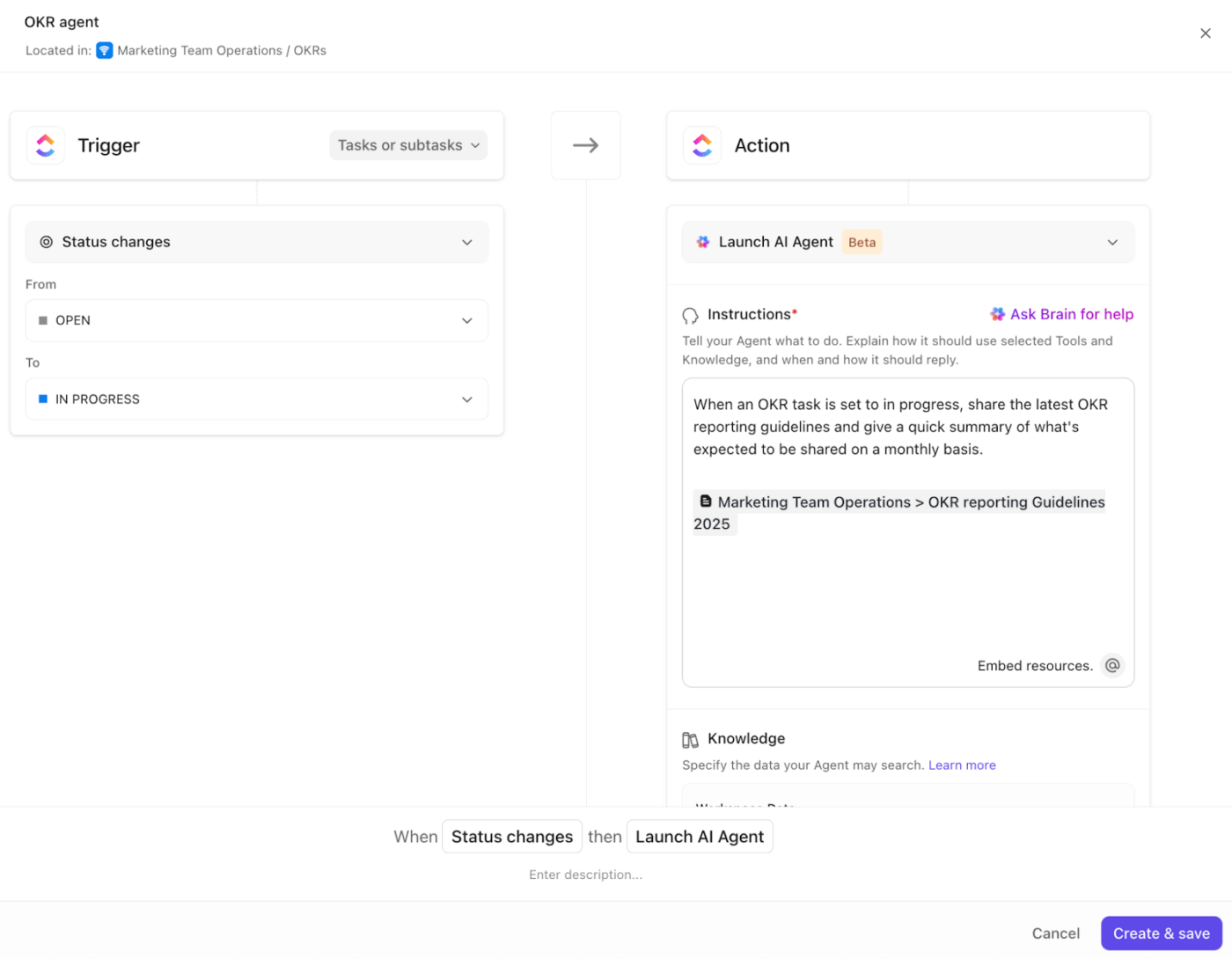
For instance, you can set up the prebuilt Weekly Report agent to automatically compile data from your ad dashboards, CRM, and social platforms every Friday. It generates a concise summary of wins, areas for improvement, and top-performing assets.
Here’s how to set up AI agents for marketing:
Finally, all this data loops back into the system. The AI learns from what worked and what didn’t, refining future campaigns automatically.
How ClickUp AI Tools Help Marketing Managers Find ‘Aha’ Moments
The ClickUp Marketing Project Management Software is the everything app for work that combines project management, documents, and team communication, all in one platform—accelerated by next-generation AI automation and search.
Get real-time insights
ClickUp Dashboards give marketing managers a live view of marketing KPIs like campaign performance, ad spend, conversions, and content progress, all pulled from different sources. You can customize cards to track exactly what matters to your team, including lead velocity and engagement by channel.
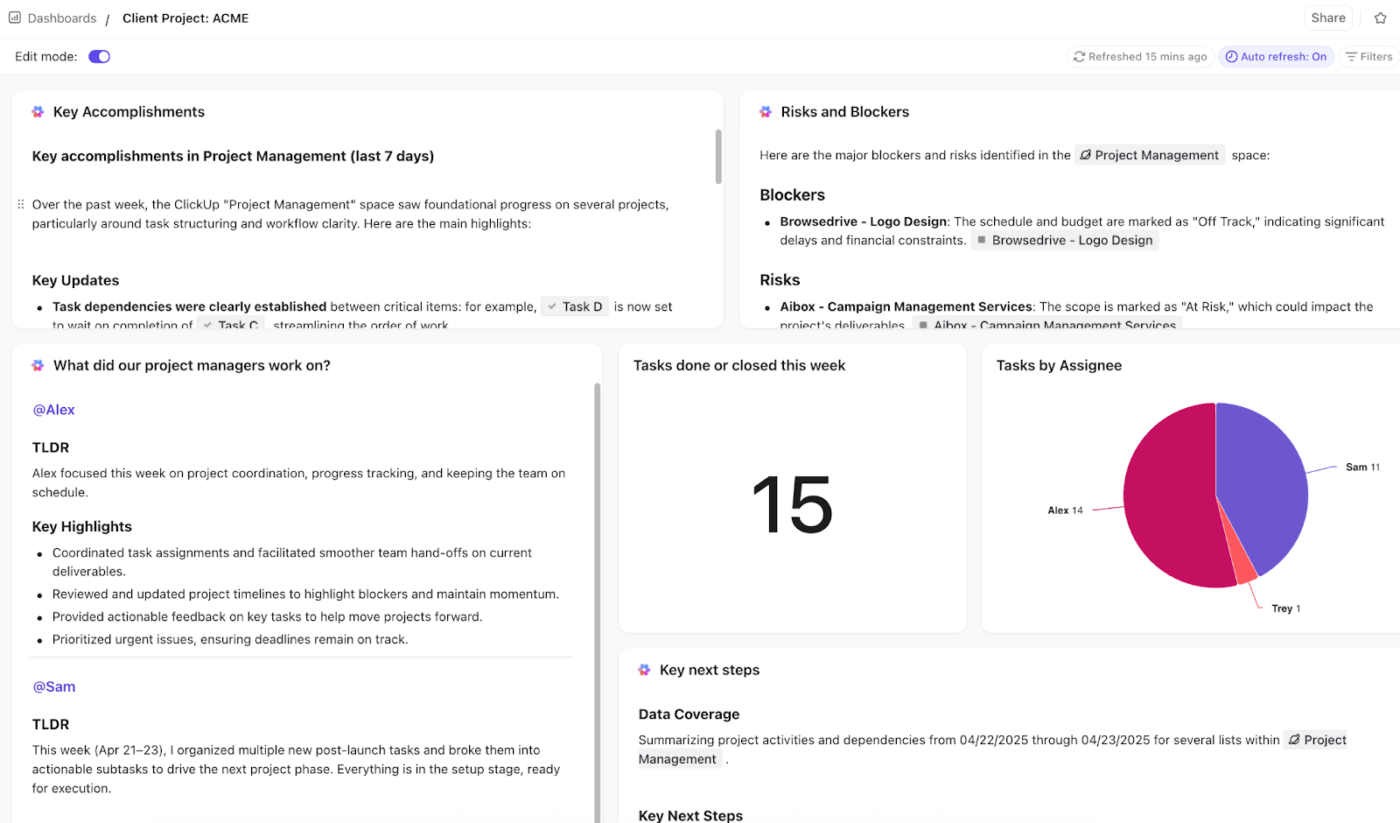
ClickUp Brain’s AI Cards surface real-time insights right inside your dashboard. They summarize trends, highlight anomalies, and even suggest next actions based on what’s happening in your workspace.
For instance, if your paid campaign CTR suddenly spikes, an AI Card might highlight the trend, explain the possible cause, and recommend scaling similar creatives.
Eliminate generative AI sprawl
To take these insights further, turn to ClickUp Brain MAX. With a unified AI hub, it gives you access to models like ChatGPT, Claude, and Gemini without switching tabs.
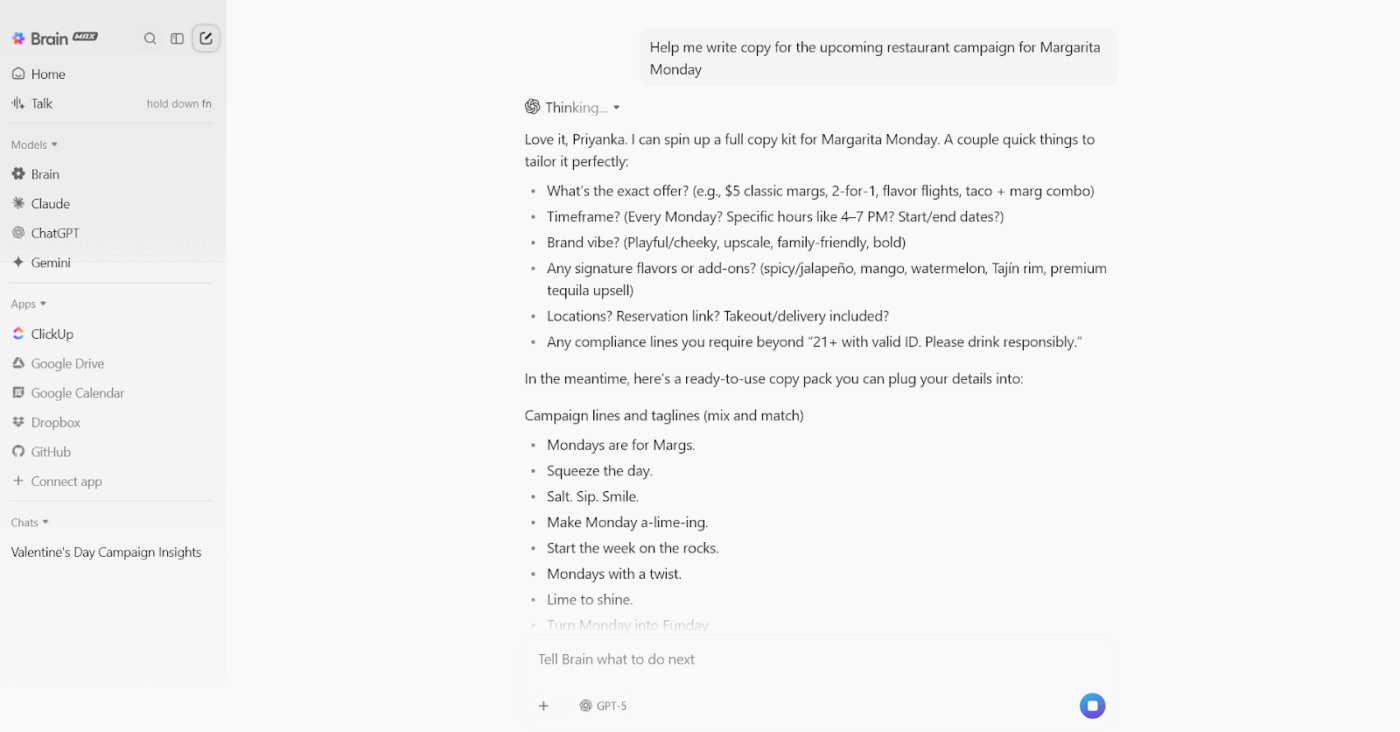
Its contextual intelligence makes it special. ClickUp Brain MAX taps into the work graph, so it understands your tasks, projects, relationships, and even connected tools. Plus, the platform’s voice-first interface makes brainstorming or dictating next steps effortless.
And because ClickUp Brain MAX provides access to multiple AI models in one place, you always get the best results for each use case.
⚡ Template Archive: The ClickUp Marketing Campaign Management organizes all your marketing activities in one place.
The marketing campaign template’s custom statuses, like Blocked, Complete, and Done, help you track progress, while custom fields like Final Content, Draft, and Approval save vital team information.
🧠 Fun Fact: The world’s oldest known print ad is from China, c. 960-1276 AD, for Jinan Liu’s Fine Needle Shop. It had a logo (a rabbit holding a needle) and promised ‘fine quality needles…ready for use at home in no time.’
Real-World Examples of AI-Driven Marketing Insights
Across industries, brands are using AI to uncover insights that transform campaigns, personalize experiences, and scale creativity.
Here’s how leading companies used AI in advertising:
1. Starbucks
Using its AI platform ‘Deep Brew,’ Starbucks analyzes app and loyalty data (purchase history, location, weather) to surface personalized offers and suggestions. This increases customer engagement and more frequent purchases.
More insights on its AI tech:
2. Sephora
Sephora offers a ‘virtual artist’ tool that uses facial recognition and AI to let users ‘try on’ makeup virtually and receive tailored product suggestions. The campaign drove stronger conversion rates and reduced returns by giving customers confidence before purchase.
📖 Also Read: Solving Work Sprawl: AI and the Future of Work
3. Heinz
Heinz turned ‘What does the world think ketchup looks like?’ into an innovative AI-powered marketing campaign. Partnering with DALL-E, the brand generated surreal, witty images of ketchup in unexpected scenarios like ‘ketchup in space’ and ‘ketchup in the future.’
The campaign gained insights into customer sentiment and visual preferences to influence future packaging.
🔍 Did You Know? Tituli picti (painted walls) in Pompeii served both as political propaganda and product ads: signs and wall paintings advertised gladiator battles, theaters, taverns, and even laundries. Advertising has been integrated into daily life for centuries.
Challenges and Ethical Considerations
Here are some of the biggest challenges (and ethical grey areas) that come with using AI:
- Data privacy risks: Real-time AI thrives on user data, but that means collecting and analyzing a lot of sensitive information. Most people don’t realize how much data they’re sharing, and keeping things compliant with laws like GDPR and CCPA is a constant balancing act
- Bias in the algorithm: AI learns from historical data, which means it can accidentally carry over human bias. That can show up in ad targeting, audience selection, or even product recommendations, hurting customer trust and brand reputation
- Missing the human context: AI doesn’t always understand the tone, culture, and emotion behind feedback
- Transparency troubles: Ever tried to explain why an AI made a certain decision? It isn’t easy for models to evolve, even marketers find it hard to trace the logic behind recommendations, making accountability a challenge
- Consent and opt-out friction: Some systems make it harder for users to say no or revoke consent. These ‘dark patterns’ can backfire fast, leading to backlash or penalties
- Data security risks: Handling massive live datasets means higher chances of leaks or cyberattacks. Encryption and audits help, but total safety is a moving target
🔍 Did You Know? Billboards (or at least large outdoor posters) trace back far: the Egyptians used monuments (like obelisks) to announce laws/treaties; then, more modern large poster/billboard structures became prominent in the U.S. around the 1830s as roadside advertising grew.
Metrics to Measure ‘Aha’ Impact
Use this checklist to track whether your ‘aha’ moments are truly moving the needle on customer engagement, retention, and ROI! 🏹
✅ Activation rate: Measure how quickly your campaigns translate insights into action, like launching new audience segments or testing a refined message
✅ Retention of engaged audiences: See if the audiences identified through your ‘aha’ insights stay engaged longer or convert more consistently over time. Sustained retention signals a meaningful understanding of user behavior
✅ Time to insight (TTI): Track how long it takes to uncover and act on valuable insights. A shorter TTI means your AI tools and data workflows are delivering faster breakthroughs
✅ Conversion improvements: Compare campaign conversion rates before and after acting on an ‘aha’ moment. A clear uptick here proves the insight translated into real business impact
✅ NPS or brand sentiment shift: Check if campaigns inspired by AI-driven insights lead to improved brand perception, higher NPS, or better sentiment on social and review platforms
✅ Referral and organic growth: Evaluate if AI-informed marketing actions, like personalized targeting or content optimization, spark more referrals, mentions, or organic engagement
✅ Efficiency gains: Assess how much time your team saves in analysis, reporting, or campaign planning after adopting AI insights
🧠 Fun Fact: Unique Selling Proposition (USP) as a formal marketing concept was popularized in the mid-20th century (not a specific ad but a whole shift in how creatives approached campaigns). This stresses a single, distinct benefit that other brands didn’t or couldn’t claim.
Spark Smarter ‘Aha’ Moments With ClickUp
Turn every data point into a spark that guides your next big move.
AI turns noise into nuance, and ClickUp transforms that clarity into confident execution. ClickUp Brain helps you see patterns across content, ads, and audience behavior while suggesting actions rooted in real context. Automations take care of the repetitive work, and AI Cards deliver insights the moment they emerge.
Power users rely on ClickUp because it makes every decision traceable and every result measurable. So, why wait? Sign up for ClickUp today!
Frequently Asked Questions (FAQ)
AI helps marketing managers go beyond surface-level metrics. It analyzes customer behavior, purchase intent, and engagement trends to find the audiences most likely to convert. AI tools target and automate optimization, reducing wasted ad spend and ensuring your campaigns deliver stronger ROI with less guesswork.
Yes, absolutely! AI adds an extra teammate to handle data, reporting, and insights around the clock. Small teams can use it to automate repetitive work, understand their audience faster, and make data-backed decisions.
Yes. AI connects insights from across your channels, including ad platforms, social media, search, and email, to give you a unified view of performance. This helps you see how paid and organic efforts influence each other, identify what’s driving results, and fine-tune strategies.
ClickUp brings AI directly into your workflow. You can plan campaigns, generate content ideas, summarize reports, and track results. With ClickUp Brain, teams can instantly turn insights into tasks, automate routine updates, and manage marketing projects from strategy to execution without switching tools or tabs.

